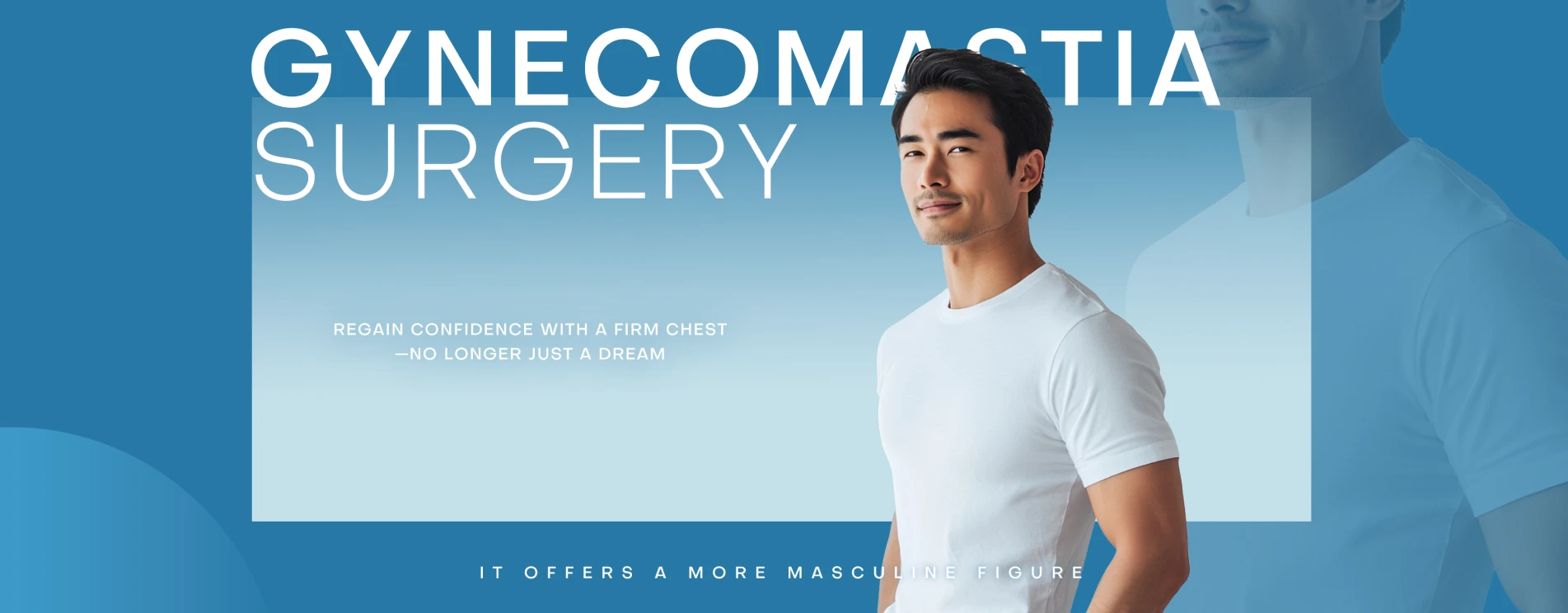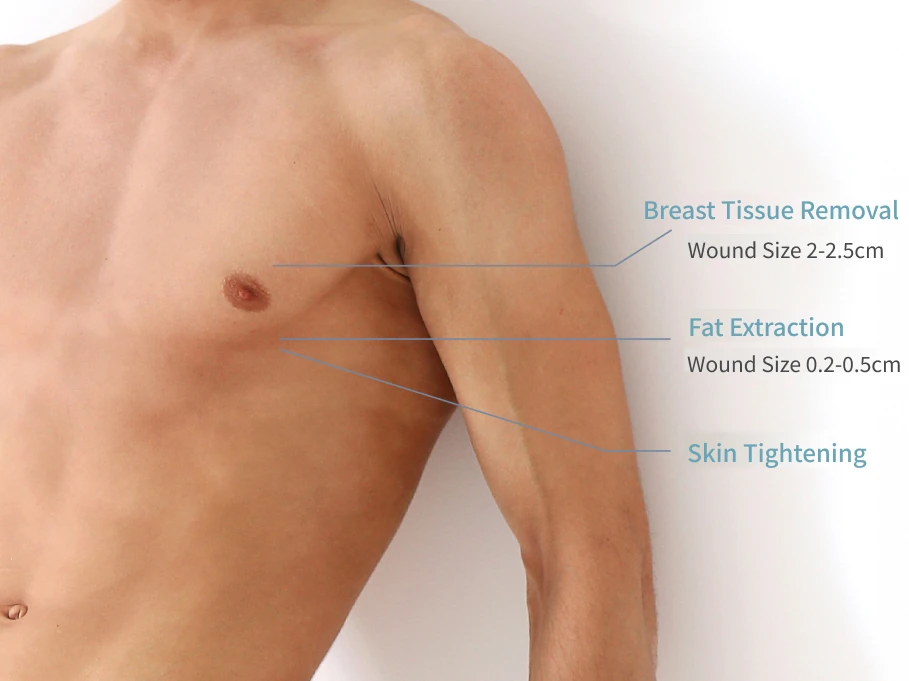

About 2 hours
Intravenous General Anesthesia
Size
About 2-2.5cm
About 7 days
Do you also feel
this way?

Exercise and weight training can't reduce chest fat

Embarrassing bulge under clothes

Afraid to walk with a proud chest

Limited results from fat freezing and lipolysis injections
Check It!
What are the types of
gynecomastia?
Fat Type

This is caused by fat accumulation leading to enlarged breasts, typically associated with consuming too much fried or processed food, which can cause hormonal changes. Liposuction can be used to remove the fat.
Glandular Type

This type is caused by excessive growth of glandular tissue, usually due to hormonal imbalances during puberty. The solution is to remove the glandular tissue.
Mixed Type

The most common type, a combination of fat and glandular tissue. Liposuction is first used to remove the fat, followed by the removal of the glandular tissue.
Gynecomastia Surgery
Solve the Embarrassing Chest Bulge

Gynecomastia surgery generally consists of 3 main procedures: Liposuction, Gland Removal, and Skin Adjustment.
- Liposuction: A small incision (about 0.2-0.5 cm) is made under the armpit or along the sides of the chest. The probe emulsifies the fat, and the fat is then removed.
- Gland Removal: A small incision (about 2-2.5 cm) is made under the areola, where the glandular tissue is removed.
- Skin Adjustment: In cases of severe breast sagging, skin tightening may be required. This involves removing excess skin through an incision around the areola, along with the removal of loose tissue. Afterward, the breast shape and nipple position can also be adjusted. There are various methods for skin tightening: mild cases may only require incisions around the areola, while severe cases might involve a horizontal incision, similar to a double-incision mastectomy.
Gynecomastia Surgery
BENEFITS
Short Recovery Time, Low Pain
Small Incision, Low Bleeding
Ability to Sculpt Chest Contours
Ability to Adjust Nipple Position
Case Comparison Photos
Before & After



Gynecomastia Surgery
Attending Physician



Doctor
CHE WEI CHANG
Doctor
PO YING LEE
Select a Doctor to View Their Information

Medical-Grade
Surgery
Equipment

Third-Party Dust Testing
No Touch Mechanism
Pro Air Shower Room
Hospital-Grade OR

Air Shower Room
NAISS CLINIC boasts a professional air shower room. Before surgery, the medical team must pass through this room, where high-speed, powerful clean air rapidly removes dust, hair, and other particles from the sterile clothing. It also features an Air Lock mechanism, allowing only one-way traffic through the entrance and exit, reducing the risk of post-operative infections.
NAISS Service Process

1
Consultation Needs

2
Pre-Surgery Photoshoot & Marking

3
Post-Surgery Recovery

4
Post-Op Follow-Up
ATTENTION
Gynecomastia Surgery Surgery Precautions
If you have hypertension, diabetes, keloid-prone skin, a history of drug allergies, etc., please inform your doctor in advance.
Two weeks before the surgery, avoid taking anticoagulants such as Aspirin, herbal medicine, and Vitamin E.
Two weeks before the surgery, avoid smoking, drinking alcohol, and consuming coffee.
Two weeks after surgery, avoid intense exercise and lifting heavy objects.
Keep the wound dry after surgery and avoid rubbing it.
FAQ
About Gynecomastia Surgery
If gynecomastia is caused by fat accumulation, it is possible to improve it through exercise and dietary control. However, if there is a gland issue, surgery is required.
The incision will be about 1/3 of a circle, located below the areola (around 2-2.5 cm). Since everyone’s areola size varies, the size of the incision may differ slightly. The scar will not be very noticeable as it is placed in the pigmented area of the areola. Over time, the scar will fade.
Once the gland and fat are removed, they will not regenerate. Therefore, gynecomastia will not recur.
Yes! Compression garments help the skin rebound, reduce swelling and bruising, and promote wound healing.